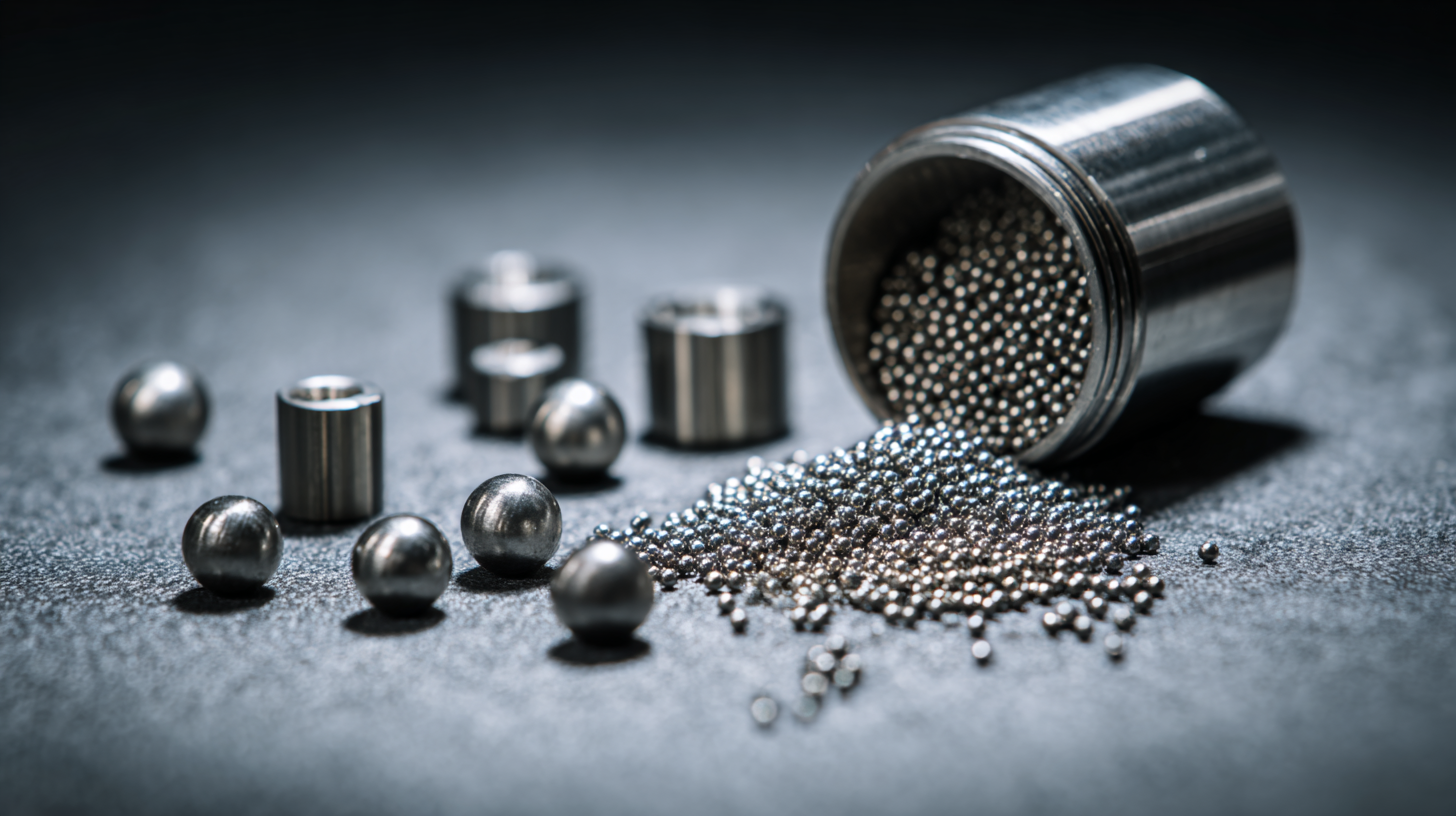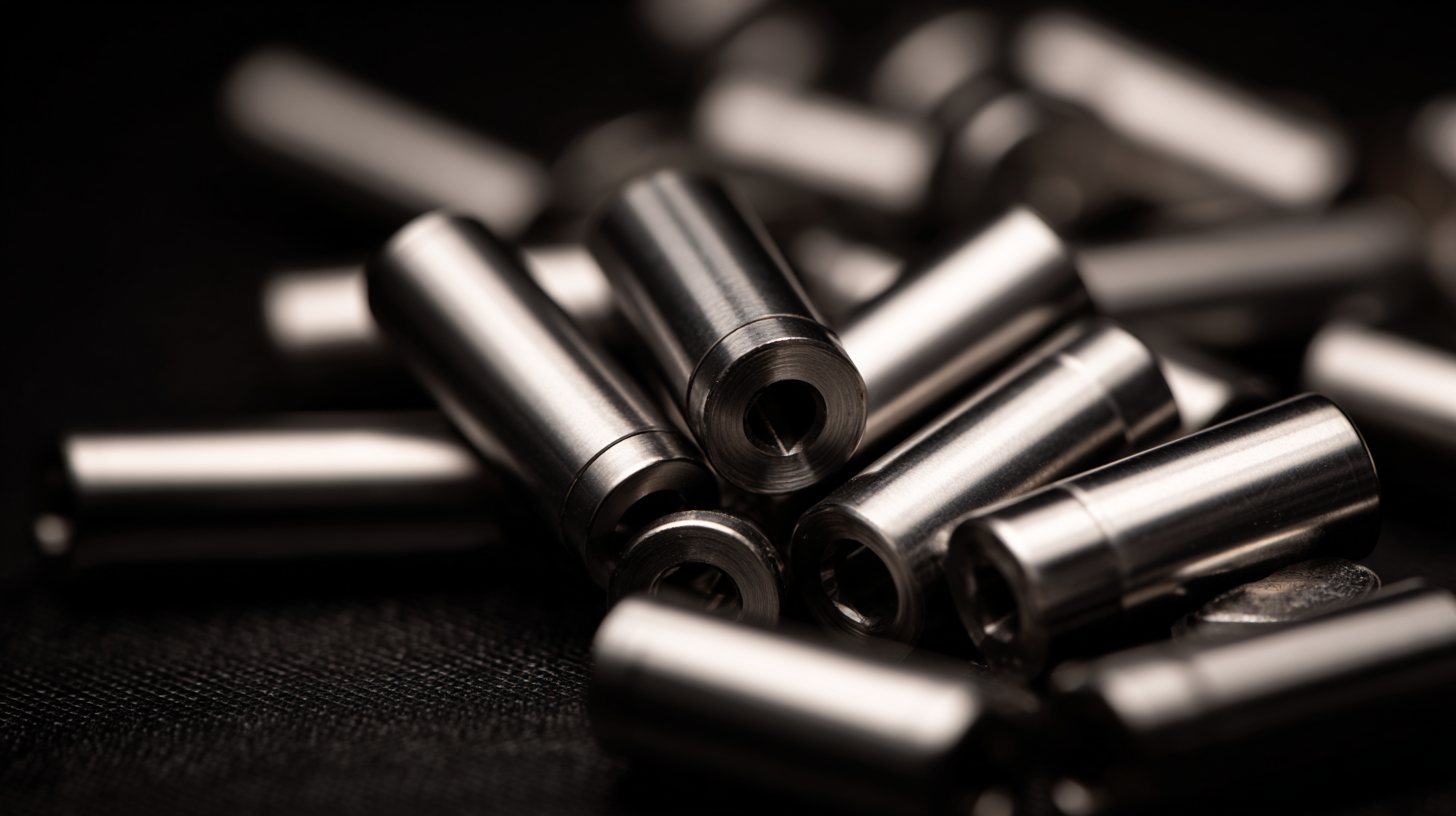Leave your message now to get your free sample and discount price
Leave your message now to get your free sample and discount price
Tungsten Carbide Alloy has emerged as a game-changer in various industrial applications, offering unparalleled performance and durability. Known for its exceptional hardness and resistance to wear, this advanced material is increasingly being utilized across sectors such as mining, manufacturing, and construction. The unique properties of Tungsten Carbide Alloy make it ideal for producing cutting tools, milling components, and wear-resistant parts that can withstand the rigors of demanding environments. As industries continue to evolve and seek efficient solutions to enhance productivity, the advantages of Tungsten Carbide Alloy become evident. By unlocking the potential of this remarkable material, businesses can achieve significant improvements in operational efficiency, product longevity, and cost-effectiveness. In this blog, we will explore various case studies highlighting the successful application of Tungsten Carbide Alloy in industrial settings, revealing how it transforms challenges into opportunities for growth and innovation.

Tungsten carbide (WC) alloys are widely recognized for their exceptional hardness, wear resistance, and thermal stability, making them indispensable in various industrial applications. Recent advancements in additive manufacturing (AM) of WC-Co cemented carbides have showcased promising technology routes that enhance the microstructure and mechanical properties of these alloys.
For instance, studies highlight that high-density, ultrafine-grained tungsten carbide can achieve hardness levels up to 34 GPa and increased fracture toughness ranging from 5.2 to 6.4 MPa m1/2. Such properties significantly boost their performance in cutting tools and wear-resistant applications.

Furthermore, the integration of high-entropy alloys as binders has been observed to improve the mechanical and tribological characteristics of cermets, suggesting a vast potential for innovation in the field. A recent investigation on the microstructural characteristics of tungsten alloy/steel composites fabricated by hot isotactic pressing (HIP) illustrates how these advanced manufacturing techniques can facilitate enhanced interfacial bonding and mechanical integrity.
Additionally, by utilizing machine learning frameworks to predict the hardness and fracture toughness of WC-based composites, manufacturers can rapidly optimize material designs, ensuring better alignment with application-specific demands.
Tungsten carbide is a vital component across various industrial applications due to its exceptional hardness and wear resistance. As industries increasingly seek durable materials, tungsten carbide’s role in enhancing the performance of machinery and tools cannot be overstated. Recent market analysis shows that India’s tungsten carbide powder market is projected to grow from USD 327.5 million in 2024 to USD 485.7 million by 2032, driven by a compound annual growth rate (CAGR) of 5.2% between 2025 and 2032. This growth reflects the rising demand for tungsten carbide in cutting tools, drilling equipment, and other manufacturing processes, making it an indispensable material in modern industry.
Innovations in coating technologies further expand tungsten carbide's applications. For instance, the use of high-velocity oxygen fuel (HVOF) thermal spray techniques to enhance the corrosion resistance of AISI 4130 steel demonstrates the adaptability of tungsten carbide in protective coatings. Such advancements in material science not only improve the longevity of industrial components but also contribute to cost efficiency by reducing maintenance and replacement frequency. The ongoing development of specialized tungsten carbide powders, designed for thermal spray applications, showcases the continuous evolution of this material to meet the specific demands of diverse sectors within the industrial landscape.
| Industry | Application | Advantages of Tungsten Carbide | Typical Properties |
|---|---|---|---|
| Mining | Drills and Bits | High wear resistance, durability | Hardness: 1600 HV, Density: 15.6 g/cm³ |
| Manufacturing | Cutting Tools | Excellent cutting performance, heat resistance | Tensile Strength: 2000 MPa, Thermal Conductivity: 80 W/mK |
| Construction | Drilling Equipment | Long tool life, cost-effective | Hardness: 1800 HV, Fracture Toughness: 7 MPa·m1/2 |
| Aerospace | Wear Components | Lightweight, high strength | Density: 15.6 g/cm³, Modulus of Elasticity: 700 GPa |
| Oil & Gas | Mill Bits | Resistance to extreme conditions, reliability | Hardness: 1700 HV, Impact Toughness: 10 J |
 Tungsten carbide alloy is becoming increasingly vital in manufacturing due to its unparalleled hardness and durability. This composite material is essential for producing high-performance tools and industrial components, making it a top choice for diverse applications. Its wear resistance enables longer tool life, leading to enhanced productivity and reduced operational costs. Additionally, tungsten carbide’s high-temperature stability makes it suitable for challenging environments, ensuring reliability and efficiency in manufacturing processes.
Tungsten carbide alloy is becoming increasingly vital in manufacturing due to its unparalleled hardness and durability. This composite material is essential for producing high-performance tools and industrial components, making it a top choice for diverse applications. Its wear resistance enables longer tool life, leading to enhanced productivity and reduced operational costs. Additionally, tungsten carbide’s high-temperature stability makes it suitable for challenging environments, ensuring reliability and efficiency in manufacturing processes.
Tips: When selecting tungsten carbide for your application, consider the specific requirements such as the type of materials being machined and the operating conditions. Customizing the alloy composition can further enhance performance. Regularly monitoring tool wear can help in planning maintenance and replacements, ensuring optimal productivity.
Moreover, advancements in additive manufacturing, particularly using electron beam technology, are revolutionizing how tungsten carbide components are produced. This method allows for precise control over the material properties, leading to superior performance in critical applications. Staying informed about innovative manufacturing techniques can provide a competitive edge in the industry.
Tungsten carbide has gained recognition as one of the most durable materials in various industrial applications. When compared to other materials such as steel, ceramics, and graphite, tungsten carbide stands out for its exceptional hardness and resistance to wear. This makes it particularly advantageous in environments where tools face intense friction and pressure, such as mining, machining, and manufacturing processes. Unlike softer metals, tungsten carbide maintains its integrity under extreme conditions, leading to longer tool life and reduced downtime for replacements.
**Tips:** When selecting materials for specific industrial applications, consider not just the hardness but also the thermal stability and corrosion resistance. For instance, while tungsten carbide is ideal for cutting tools, ceramics might be a better fit for high-temperature applications. Always evaluate the specific environmental conditions and demands of your application to choose the most effective material.
Furthermore, while tungsten carbide offers remarkable strength, it is also essential to weigh its cost-effectiveness against other materials. Steel might offer lower upfront costs but can lead to higher expenses in maintenance and replacements over time. Striking a balance between initial investment and long-term performance is critical for optimal operational efficiency in industrial settings.
**Tips:** Prioritize cost-benefit analyses by assessing the lifecycle of tools made from different materials. This can help in making informed decisions that align with both productivity goals and budgetary constraints.
In the production of tungsten carbide, quality control is paramount to ensuring the material meets industry standards and customer expectations. According to a report by Grand View Research, the global tungsten carbide market was valued at approximately $15.68 billion in 2021 and is projected to grow at a CAGR of 5.7% from 2022 to 2030. This growth underscores the increasing demand for high-quality tungsten carbide products in various industrial applications, such as mining, construction, and manufacturing.
Implementing stringent quality control measures can significantly enhance the durability and performance of tungsten carbide alloys. A study published in the Journal of Materials Science highlights that the proper control of sintering temperatures and times can lead to a substantial reduction in defects within the alloy. This is crucial, as even minor inconsistencies can lead to mechanical failure in demanding applications. By adopting advanced quality assurance techniques, manufacturers can not only improve their product reliability but also gain a competitive edge in the global market, earning respect from industry peers and customers alike.
